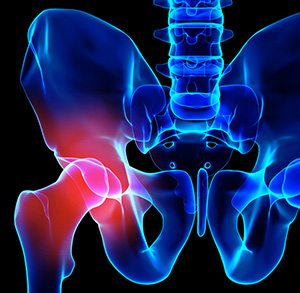
After the Hip Replacement
Depending on the exact hip replacement procedure, you should probably expect to stay in the hospital for a few days. Typically, this lasts 4-6 day. While there, you will probably need to be in bed, with a soft, but firm, wedge-shaped pillow to help keep your newly replaced hip joint in the proper position. The usual post-surgery items are often involved, such as a catheter to help you void your bladder, and an IV for fluids and medicine.
Physical therapy typically starts the day after surgery, and you may use a cane, crutches, walker, or have someone assist you as you take your first steps on your new hip. Walking can be somewhat difficult or uncomfortable at first, however your doctor can prescribe any necessary pain medications, and trained therapists will be there to guide and support you through the process of healing. Post-surgical physical therapy is likely to go on for weeks or months following a hip replacement procedure, with the goal of getting you pain free and as close to regular mobility as possible.
During the first six months to a year, you may be advised to avoid certain activities or movements that require pivoting or twisting of the legs. You may also be advised to avoid crossing your leg that has had the replacement, or squatting. Your doctor and physical therapist can advise you about alternative movements and guidelines to help you protect your new hip joint as it heals. Your doctor and physical therapist will also work together to create a customized exercise program that includes stretching and strengthening routines.
To help speed healing and avoid re-injuring your new hip, you should try to avoid things like climbing the stairs, or using a recliner (a firm, straight back chair is best). Use an elevated toilet seat (to keep pressure off your hips from bending), avoid falls by having small rugs and clutter removed, and keep pets who might accidently injure you away from your hip. Your doctor can advise you about resuming other normal activities such as driving, exercise, sports, and sex.
If you would like more information about the hip replacement process, or any other bone related treatment, please contact Orthopaedic Associates at (440) 892-1440 to schedule an appointment with one of our highly trained Orthopaedic Physicians. Orthopaedic Associates: Specializing in you.







